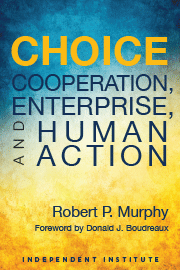December 23 marks the 102nd birthday of our nation’s central bank. The Federal Reserve Act was signed into law by President Woodrow Wilson just two days shy of Christmas back in 1913. At the time its ostensible purpose was to mitigate financial crises by acting as a lender of last resort that issued an “elastic currency,” while later its mission would morph into providing balanced economic growth and price stability. Yet any objective assessment shows that the Fed has failed horribly on all of these criteria. We should keep this abysmal track record in mind when assessing the Fed’s recent interest rate hike.
The immediate impetus for creation of the Fed was the financial panic of 1907. The very title of the original Federal Reserve Act referred to the job of providing an “elastic currency,” which would expand and contract with the needs of commerce. Rather than having perfectly solvent—though illiquid—banks go hat in hand to the likes of J.P. Morgan, the new central bank would be there to oil the wheels of trade and prevent an irrational seizing up of the financial engine.
How has the Fed fulfilled this role? The worst two banking crises in U.S. history—1929-31 and 2008-09—occurred on the Fed’s watch. Indeed, many economists argue that the Fed perversely promotes such crises, because acting as a “lender of last resort” causes banks to take more risks than they otherwise would. Any particular bank might be safer, but the system as a whole becomes more prone to total collapse.
After the “stagflation” of the 1970s, Congress amended the Federal Reserve Act in 1977 to give it what is known as a “dual mandate”: to promote maximum sustainable employment and price stability. Again, we can ask whether the Fed performs well on these criteria.
As far as employment is concerned, the Great Depression and now the Great Recession are glaring black marks on the Fed’s record. If a central bank is supposed to smooth the ups and downs of the “wildcat free market,” it’s a bit awkward that the two worst economic calamities occurred well after the creation of that central bank.
Regarding price stability, consider: From 1913 to 2015 the U.S. dollar has lost some 95 percent of its value in terms of consumer purchasing power. And it’s no coincidence that “stagflation” occurred in the 1970s: it was in August 1971 that Richard Nixon formally closed the “gold window,” ending the ability of even foreign central banks to redeem U.S. dollars in gold. This removed the last check on the American printing press, giving the Fed the green light to issue new dollars with reckless abandon and leading to double-digit consumer price inflation just a few years later.
As our survey of basic historical facts indicates, the Federal Reserve fails miserably on the various criteria its own creators gave it. If my arguments seem too simplistic, note that scholars with the Cato Institute performed an analysis relying on the latest macroeconomic techniques and reached a similar conclusion: “the full Fed period has been characterized by more, rather than fewer, symptoms of monetary and macroeconomic instability than the decades leading to the Fed’s establishment,” and “while the Fed’s performance has undoubtedly improved since World War II, even its postwar performance has not clearly surpassed that of its (undoubtedly flawed) predecessor; and alternative arrangements exist that might do better than the presently constituted Fed has done.”
If Congress created an institution that cartelized all of the nation’s farms, along with a Board that periodically set targets for cotton prices, most economists would recognize the folly. We must conclude the same when it comes to cartelizing the nation’s banks and having “experts” periodically set interest rates. In both theory and practice, the Federal Reserve System encourages financial instability, a weaker currency, and wild business cycles.









